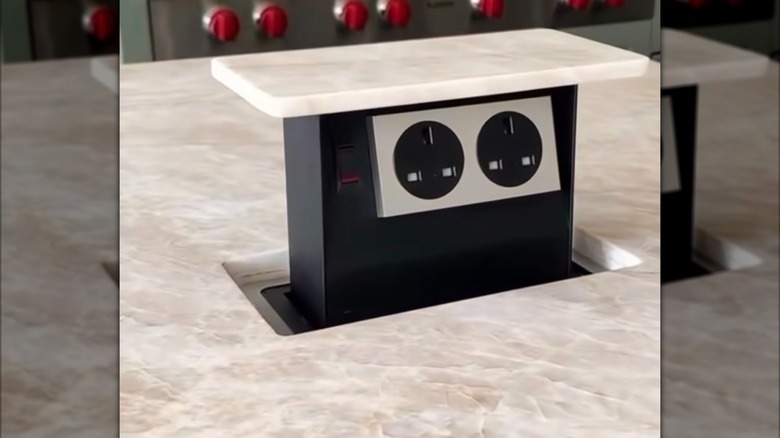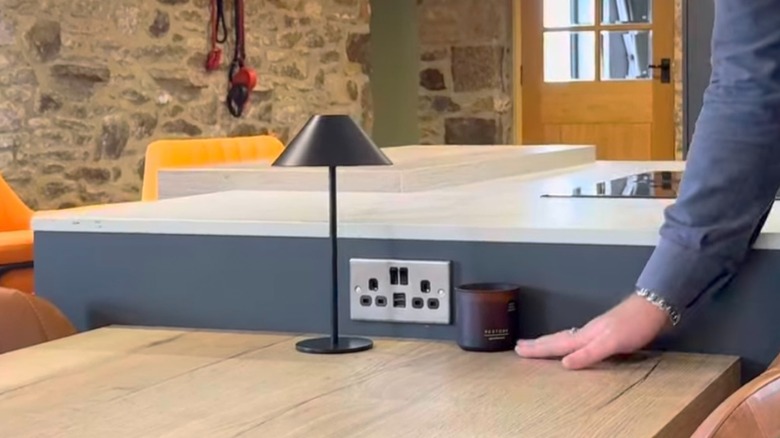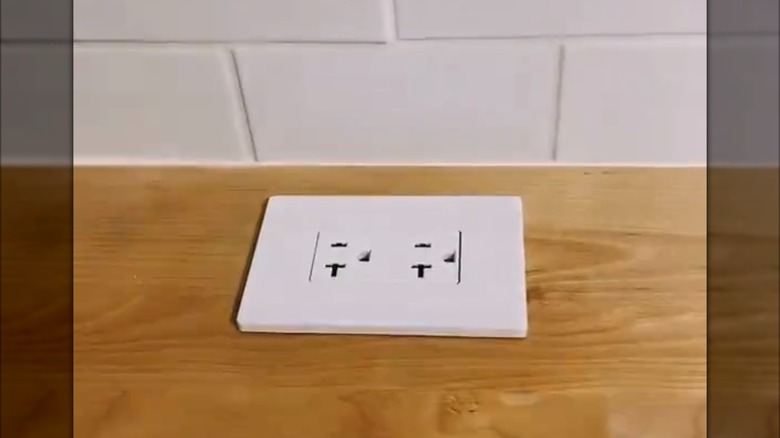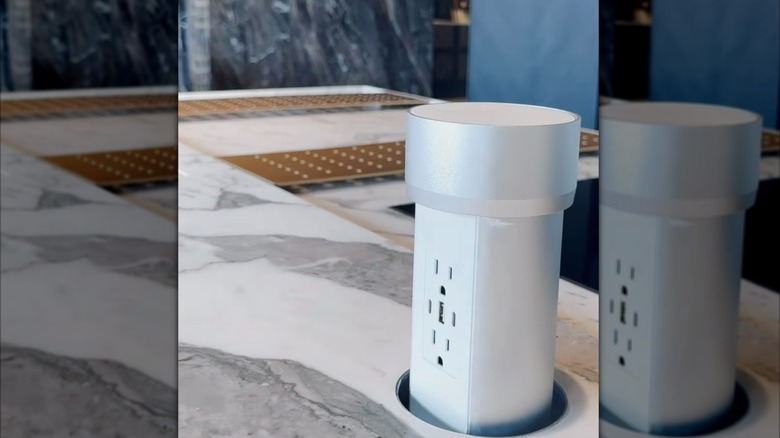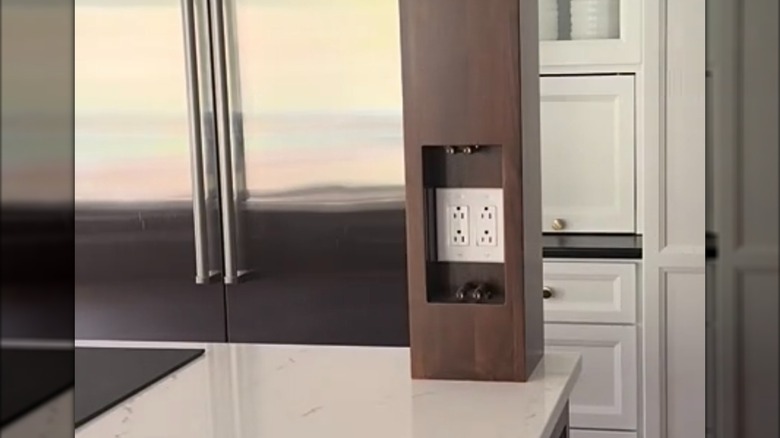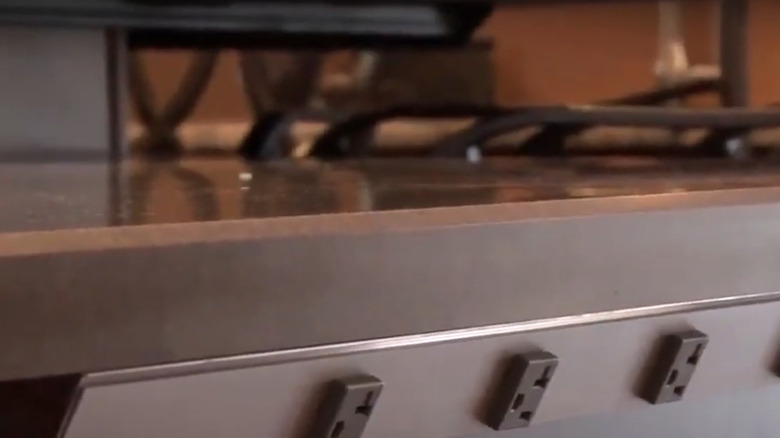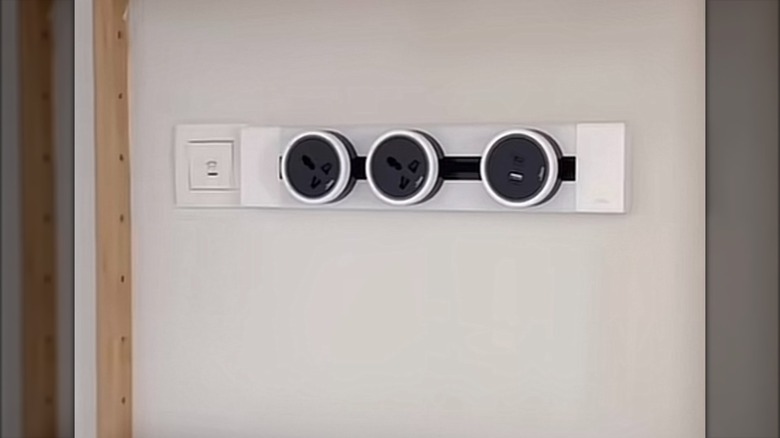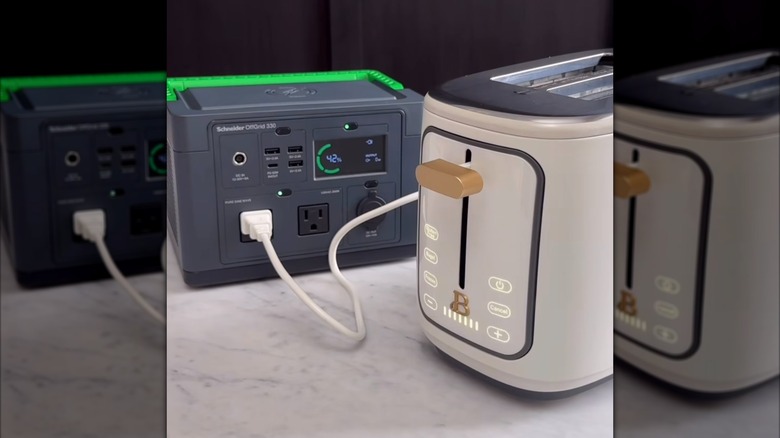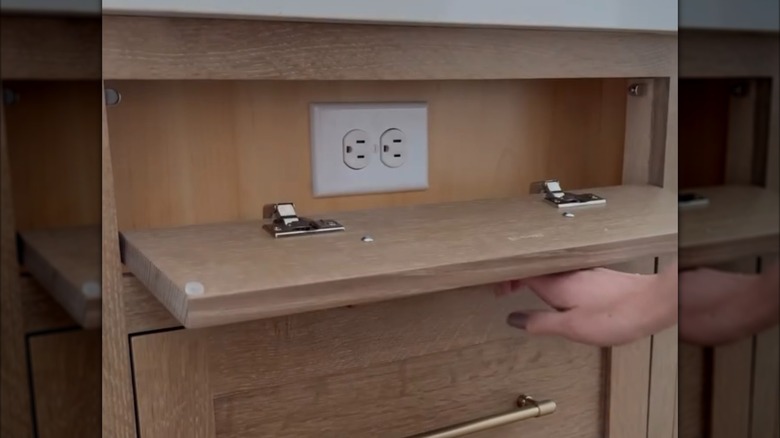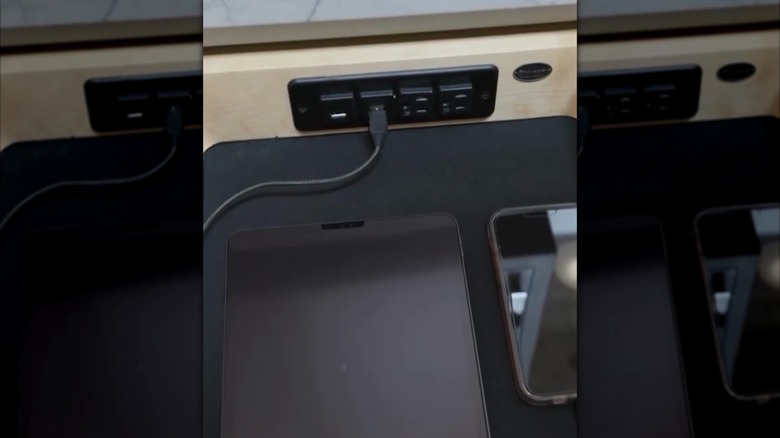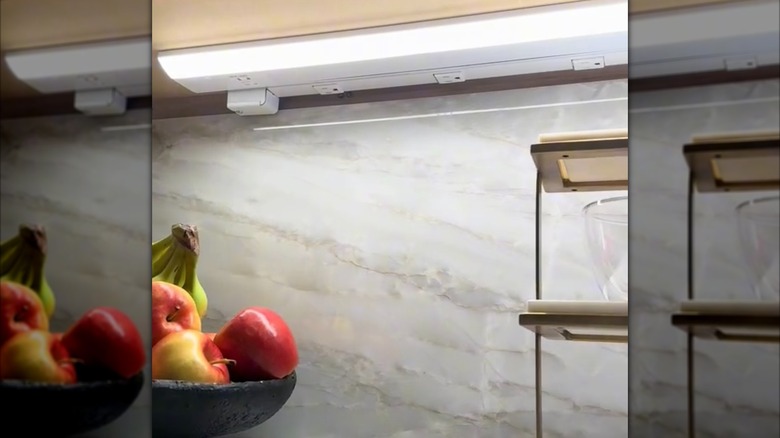Say Goodbye To Island Side Outlets: Here Are The 12 Options You Can Use Instead
Is your home up to code? The truth is, many homeowners aren't familiar with updated building codes, which can prove hazardous. The National Fire Protection Association (NFPA) issues an updated National Electrical Code (NEC) every three years to combat fires and hazards that could potentially become fatal. Due to the frequent alterations of the NEC, it's possible your home isn't aligned with the newest safety standards. For example, if your kitchen has an island or peninsula with electrical outlets installed on the sides, your home no longer meets the new regulations.
The 2017 NEC recommendations aimed to limit the use of extension cords in kitchens by requiring island peninsulas measuring at least 24 inches by 12 inches to contain one outlet. Then in 2020, the NEC stated that there should be at least one outlet in the first 9 square feet of peninsula or island work surface, and an additional outlet in every 18 square feet thereafter. However, outlets installed on the side of kitchen islands still ended up posing a hazard, since cords could be pulled out by children or pets, or snagged by other accidental means. As a result, island side outlets aren't compliant with the 2023 NEC. If you have these fixtures in your home, it may be time to consider an alternative option that meets the approved electrical guidelines. Luckily, there are plenty of options, from pop-up rectangular receptacles to outlets installed on the bottom of your upper cabinets.
Try out pop-up rectangular outlets
Pop-up outlets have become increasingly popular following the recent code changes. Rectangular pop-up outlets, in particular, are functional plug solutions that can power more than one appliance at once. Their dual sockets, USB ports, and on/off switch make them highly sought-after. Homeowners love the seamless look of this hidden power solution when it's not in use. These fixtures also often have a push-to-open feature that makes them easy to use. The downside is that this outlet is custom and may require a electrician for effective installation. Therefore, the price to add this to your island can be steep.
Utilize built-in split-level kitchen island outlets
If you have a split-level island, putting an outlet on the vertical area between the two tiers would allow you to have an easily accessible port for your devices. You can leave small appliances on your upper or lower countertops with the assurance that their cords will be out of reach from pets and children. Also, unlike pop-up fixtures, you won't accidentally end up putting a cutting board on top of your outlets. However, some homeowners may find this integration tacky, or reminiscent of a '90s kitchen. That's because today's island designs tend to favor more minimalist, streamlined setups.
Put flat outlets on your island countertop
If you want a smooth, neatly integrated outlet for your kitchen island that isn't as costly as a pop-up, you might opt for a flat port that sits flush against the countertop. Installation is a bit easier, but you must be willing to cut into the existing countertop material. This outlet solution is great for keeping cords out of your kids' reach without creating anything too obstructing or visually unappealing. For added safety, you could also add protective outlet covers to these fixtures for when they're not in use.
Install pop-up circular outlets
A different style of a seamlessly integrated kitchen island outlet is the pop-up circular option. Similar to the rectangular solution, this small yet highly functional countertop feature could be costly. Installing them is one of those home improvement projects that are better left to the professionals. Like their rectangular counterparts, these outlets are push-to-open, which makes them popular. Since they're pop-up outlets, you'll have to be careful with spills. Liquid could flow from the countertop into the receptacle. Therefore, routine cleaning is a must. Additionally, the top of the pop-up receptacle may be prone to scratches.
Give column or post outlets a try
If you want your outlets to be hidden while also being code-compliant, try installing them within a column or pillar. The outlets must be no higher than 20 inches above the work surface. These outlets will also let you skip using recessed or pop-up receptacles, which require you to cut into the material. You also do not have to have existing columns to pull this off. However, installing posts or columns to hide your electrical receptacles could be an expensive investment.
Use power strips below the second-tier of a split-level island
An alternative outlet solution for a two-tiered island is to add power strips to the upper or lower crease between the two tiers. This is different from adding built-in outlets between the tiers, though it has a similar practical effect. Using power strips will meet NEC regulations, as long as they're above the work surface or countertop, which would in this case be the first tier of the split-level island. Since this solution is a bit more nuanced, it may be best to speak with a contractor prior to installation.
Install a custom power track on your countertop or bar
For those with existing outlets that meet current standards, you may crave more ports since they allow you to utilize multiple appliances when cooking. However, extension cords and power strips are bulky and could create potential hazards. Custom power tracks with sockets are quickly gaining traction, particularly internationally. With these tracks, you can power on or off each individual socket, and slide the sockets along the rail to customize their arrangement. These features make these fixtures more customizable than conventional power strips.
Invest in a portable power block
Another more affordable solution for adding power to your kitchen island is to use a portable outlet box. These products allow you to power small appliances on your kitchen island without having to invest in permanent outlets. The downside is that you'll need to keep your power block charged. Also, these hefty units might take up precious food prep space on your countertop. This fixture could also be handy to have around in a power outage.
Hide outlets in a false cabinet door
So long as your power receptacle is placed above countertop level, you can hide it in a false cabinet door. When closed, this design solution will blend smoothly with your cabinetry. This option could work well on split-level islands, islands with columns, or L-shaped island peninsulas that hug at least one wall. Freestanding kitchen islands without cabinets, though, won't be able to accommodate this type of power outlet.
Consider putting outlets in a drawer
Another solution to try is placing an outlet inside a drawer. Note that this method won't be NEC 2023-compliant if the drawer is located below countertop level. Also, some locations ban the use of high-voltage outlets inside cabinet drawers. However, if your home state allows them, these fixtures could be a good alternative to side island outlets. If you're wondering whether outlets inside kitchen cabinet drawers are practical or more of a hassle, the answer is that it depends on your needs and what you intend to store inside the drawer.
Install a junction box in the back of your cabinets for future use
The current 2023 NEC "requires a future provision to be made where a receptacle outlet could be installed at a later date." A junction box is a good way to do this, though the NEC does not require specific electrical solutions to meet this requirement, so long as outlet installation is possible in the future. If your kitchen island currently does not have a junction box installed, it could be a good idea to add one to improve connectivity and meet current NEC-code requirements.
Move outlets off the island and hide them under upper cabinets
Not everyone has the budget to install an NEC 2023-compliant outlet solution. For many, resorting to using outlets off of the island makes more sense for practical, daily use. One option is to hide outlet strips or receptacles beneath upper cabinetry. This adds practical value to your kitchen and often looks seamless. For now, if you're planning to renovate, don't make these mistakes when designing your new kitchen island. Always opt to meet the current NEC 2023 code. Or, only install outlets that are off of your island until more updates are revealed by the NFPA.

